Although not strictly amateur radio, high altitude balloon launches and tracking can be fun for radio amateurs. As part of a schools STEM activity, the Harwich & Dovercourt High School launched a payload today, and I did my part by tracking it using amateur radio equipment, acting as one of the receivers to share telemetry online.

Ed G8FAX and I are involved with a schools engineering club, and our teams from Westcliff High School were being judged in the CSES competition at Anglia Ruskin University. The payload for today’s flight was on display, hoping to win an award.
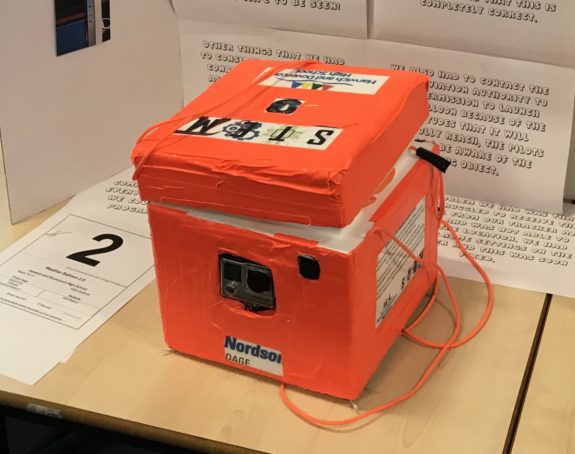
The payload included a Raspberry Pi, a sensor for some scientific experiments, and two go-pro cameras to hopefully capture some good aerial footage.
Signals were heard clearly on 434.250MHz USB (USB RTTY 300 baud 910Hz shift ASCII-8 no parity 2 stop bits) and decoded using the FL-Digi package. The shot here shows the RTTY waterfall, the raw data, and the uploaded telemetry in green:
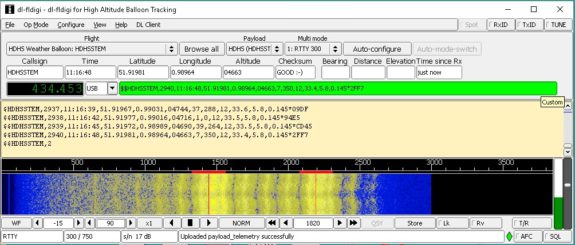
Full credit to Alfie from Harwich & Dovercourt High School for his hard work on this HAB flight. The payload was excellent, and when we met Alfie, I think he might have been surprised to meet two hams who knew something of RF and tracking. I’ve just received word that Alfie is in line to pick up an award for this project, to be presented later this month. Well done to Alfie, and the team at the school’s STEM club.
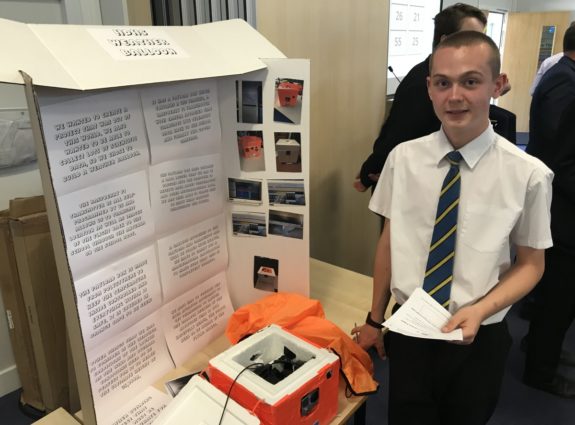
The balloon reached a height of around 81,000 feet before ditching just East of Colchester at around 12:27pm on the 2nd of July 2018. Hopefully, Alfie and the team will be able to recover the payload safe and sound.
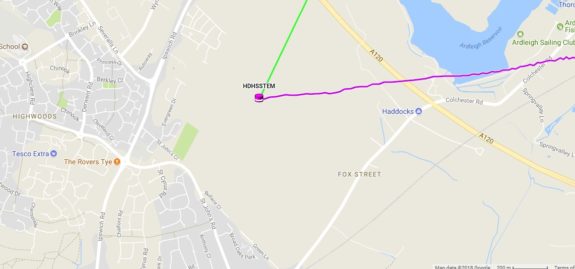
Tracking HAB flights is quite good fun, and any amateurs interested should have a look at tracker.habhub.org to see what flights are in the air, and coming up. A £10 USB dongle is adequate, with a 70cm external antenna.
We put together some basics on getting started with tracking (plus a video) a while back: High Altitude Balloon Tracking
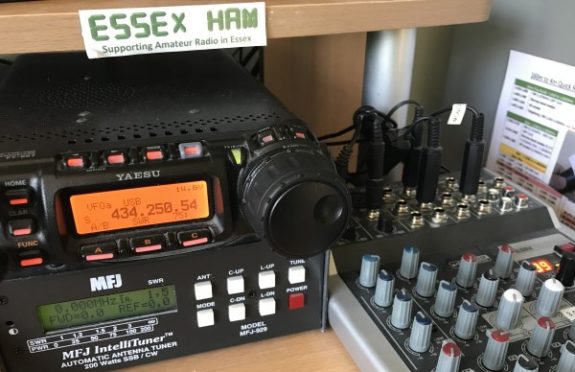
As an aside, well done to one of our teams from Westcliff High School, who are in line for an award for a pet tracker, a nice RF-related project using a GSM module to text GPS coordinates. The team was helped along the way by Andy G7TKK, as well as Ed G8FAX and I over the last year.
Pete M0PSX

